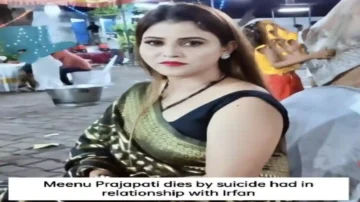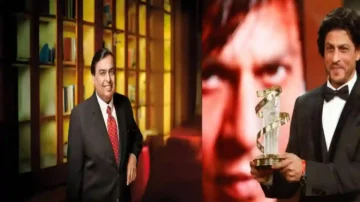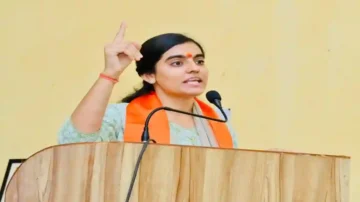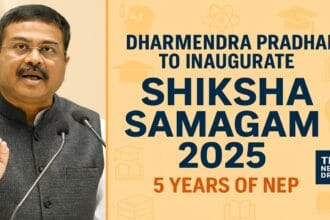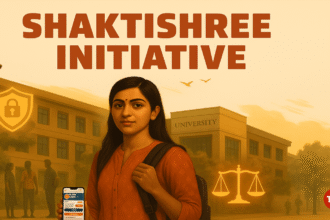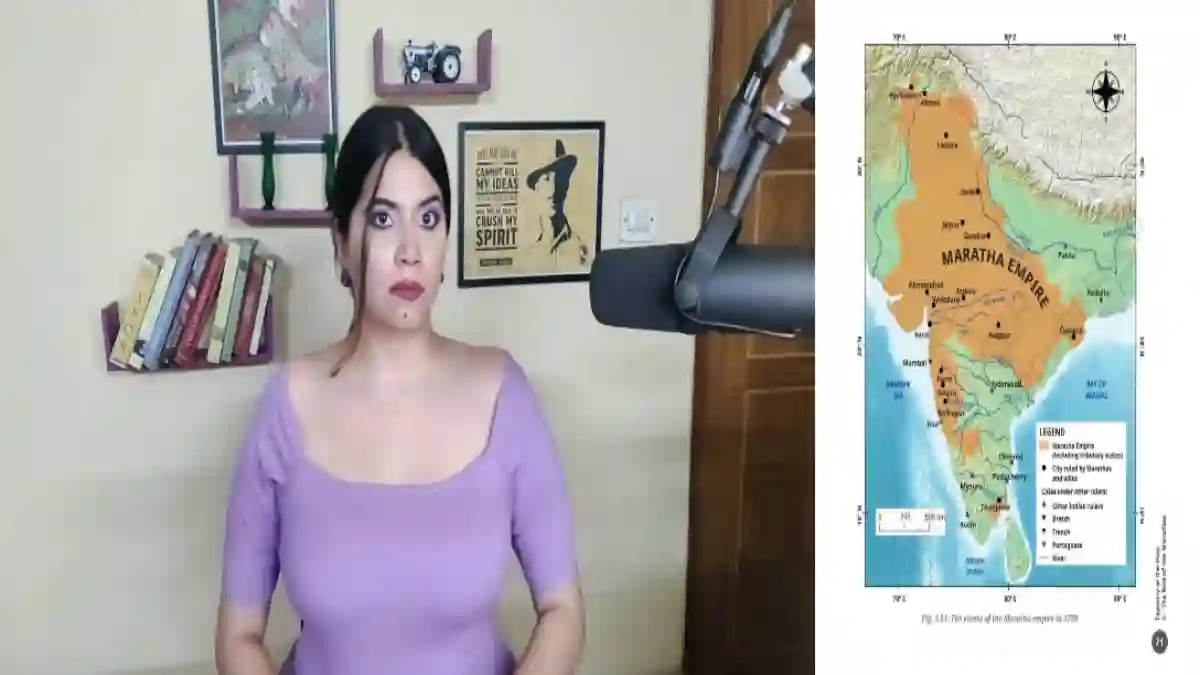
New Delhi – A fresh controversy has emerged around the NCERT Class 8 History textbook after historian Dr. Ruchika Sharma pointed out alleged distortions in the portrayal of the Maratha Empire. According to her, the textbook map shows the Maratha dominion stretching from Kashmir to Maharashtra and Rajasthan to Odisha, raising serious concerns over the historical accuracy of India’s school curriculum.
Did the Maratha Empire Really Rule Kashmir, Punjab, Bengal and Rajasthan?
Dr. Ruchika Sharma questions the validity of the map published in NCERT’s book. She argues that while the Maratha Empire at its peak during the mid 18th century did expand far beyond Maharashtra, it never had direct and permanent control over Kashmir, Bengal, or Punjab.
Historically, the Marathas did launch expeditions into North India and briefly controlled Delhi after defeating the Mughals in the 18th century. They also collected chauth (tax tribute) from several regions including parts of Bengal, Odisha, and Punjab. However, historians note that such influence was often temporary, marked more by raids and taxation rights than consolidated rule.
Thus, describing the entire region from Kashmir to Odisha and Punjab to Bengal as firmly under Maratha rule may present a misleading picture to students.
Was the Maratha Empire Truly a “Samrajya”?
The term samrajya (empire) implies a centralised, cohesive administration. In the case of the Maratha Empire, historians often highlight that it was a confederacy of powerful chiefs such as the Peshwas, Holkars, Scindias, Gaekwads, and Bhonsles. While they collectively expanded Maratha influence, their territories were not always directly ruled from Pune.
Thus, though the Marathas built a vast sphere of influence, historians debate whether it should be equated with a fully centralised empire in the same sense as the Mauryas, Guptas, Rajputs or Mughals.
Marathas and Mughals: Enemies or Allies?
The NCERT narrative often simplifies the relationship between the Maratha Empire and the Mughals as constant warfare. In reality, history shows a more complex dynamic.
In the 17th century, Shivaji Maharaj fought fiercely against the Mughal emperor Aurangzeb.
Later, Maratha leaders sometimes allied with Mughal emperors against other rivals. For example, they supported the Mughal throne in Delhi at times to expand their political influence.
This shifting pattern of conflict and cooperation is rarely highlighted in school textbooks, giving students a one dimensional view of a much more layered history.
Was the Maratha Empire the Largest Before the British?
Another debated claim is whether the Maratha Empire was the largest Indian empire before the arrival of the British.
At its peak in the mid 18th century, Maratha power extended across most of India, surpassing the Mughal Empire, which had already weakened. The Marathas controlled large territories, collected tributes, and maintained strong military presence across the subcontinent.
However, unlike the Maurya, Rajput or Mughal empires, the Marathas did not have a uniformly administered empire. Many historians suggest describing it as India’s last great indigenous power before the British Raj, rather than the largest unified empire.
Suggested Readings: NCERT History Distortion: Ignored Rajput, South & Eastern Dynasties
Bhawani Singh Kalvi Slams Misleading Map in Class 8 Textbook: NCERT History Distortion
Historian Calls for Correction in NCERT
Dr. Ruchika Sharma stresses that NCERT textbooks must represent history accurately, without exaggeration or distortion. She also highlights that many important dynasties and kingdoms have been ignored in the syllabus, while certain empires are disproportionately glorified.
She calls for inclusion of regional histories, tribal struggles, and lesser known kingdoms, so that students understand India’s diverse and multi-layered past instead of receiving a simplistic, sometimes inaccurate picture.
Conclusion
The debate over the Maratha Empire in NCERT textbooks raises larger questions about how history should be taught in schools. Should emphasis be on glorification, or on critical, evidence based narratives? As historians like Dr. Ruchika Sharma argue, India’s youth deserve history that is accurate, inclusive, and free from distortions.



